EPoX EP-9U1697-GLi: ULi M1697 Goes Mainstream
by Gary Key on March 15, 2006 12:05 AM EST- Posted in
- Motherboards
Basic Features: EPoX EP-9U1697 GLi
The EPoX EP-9U1697 GLi is a value-based performance board targeted towards the AMD enthusiast user. The board ships with an accessory package that includes the standard assortment of IDE/SATA cables and power connectors. Epox also includes an extensive driver CD along with desktop utilities. Of special note is Epox's Thunder Probe windows based utility that allows for full temperature monitoring and control of the CPU and system fans. Epox also includes the Thunder Flash set of utilities for automatic retrieval and updates to the latest BIOS, BIOS recovery, and boot-up screen customization. More information about the Thunder Flash system can be located here.
| Specification | Epox EP-9U1697 GLi |
| CPU Interface | 939-Pin Socket supporting AMD Athlon 64 / 64FX / 64X2 |
| Chipset | ULi M1697 - Single Chip Solution |
| Bus Speeds | 200MHz ~ 500MHz in 1MHz increments |
| CPU Clock Multiplier | Auto, 5x ~ 12x (4000+) in 1x increments, max multiplier dependent upon CPU utilized |
| Memory Speeds | Auto, 100 MHz, 133MHz, 160MHz, 200MHz, 218 MHz, 240MHz |
| PCI Bus Speeds | Async with HT frequencies, Disabled |
| PCI Express Bus Speeds | Async with HT frequencies, Disabled |
| HT Multipliers | Auto, 200MHz, 400MHZ, 600MHz, 800MHz, 1000MHz |
| HT Link Speed | Auto, 8-bit, 16-bit, 4-bit, 2-bit |
| Core Voltage | Auto, -0.200V to +0.250V (in 0.025V increments), (max voltage dependent upon CPU) |
| DRAM Voltage | Auto, +0.00V to +0.70V, (in 0.10V increments) |
| Chipset Voltage | Auto, +0.00V to +0.30V, (in 0.10V increments) |
| Memory Slots | (4) x DIMM, max. 4GB, DDR 400/333, non-ECC, un-buffered memory, Dual Channel Operation supported |
| Expansion Slots | (2) x PCI-E x16 (first slot operates in 1x16 mode, both slots in 2x8 mode) (1) x PCI-E x1 (3) x PCI 2.3 |
| Onboard SATA | ULi M1697: (4) x SATA II |
| Onboard IDE | ULi M1697: (2) x UltraDMA 133/100/66/33 |
| SATA/IDE RAID | ULi M1697: (4) x SATA II RAID 0, RAID 1, RAID 0+1, RAID 5 |
| Onboard USB 2.0 | (8) USB2.0 ports (four ports, two headers for four more ports) |
| Onboard LAN | Realtek RTL8201CL PCI 10/100Mb/s Ethernet LAN - PHY |
| Onboard Audio | Realtek ALC-655, 5.1 channel capable AC97 2.3 Audio Codec |
| Power Connectors | 24-pin ATX 4-pin ATX 12V |
| Back Panel I/O Ports | 1 x PS/2 Keyboard 1 x PS/2 Mouse 1 x Parallel (ECP/EPP) 1 x Serial (COM1) 1 x Audio I/O Panel 1 x RJ45 LAN 1 x Coaxial S/PDIF Out 4 x USB 2.0 |
| Other Features | Thunder Probe - Windows based Monitoring Program Magic Flash - Windows based BIOS Flash Utility Magic Screen - Windows based Bootup Screen Design Program CP80P - Post Port Debug LED EZ Button - On-board Power and Reset Button |
| BIOS | Award 1.0 (2/06/06) |
The EPoX EP-9U1697 GLi is a value-based performance board targeted towards the AMD enthusiast user. The board ships with an accessory package that includes the standard assortment of IDE/SATA cables and power connectors. Epox also includes an extensive driver CD along with desktop utilities. Of special note is Epox's Thunder Probe windows based utility that allows for full temperature monitoring and control of the CPU and system fans. Epox also includes the Thunder Flash set of utilities for automatic retrieval and updates to the latest BIOS, BIOS recovery, and boot-up screen customization. More information about the Thunder Flash system can be located here.
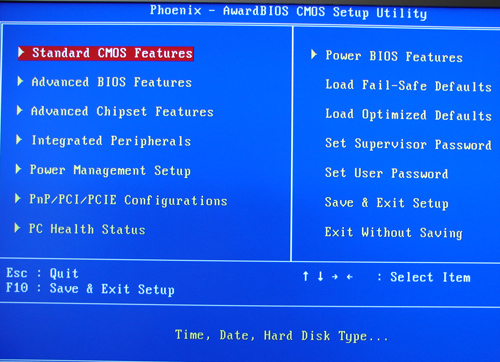
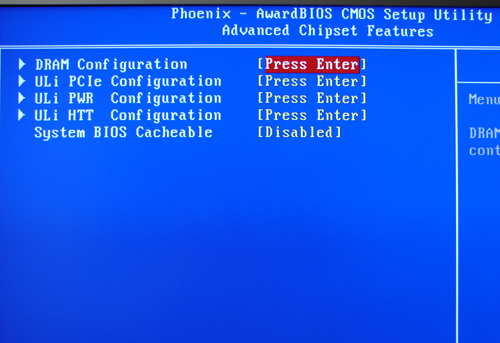
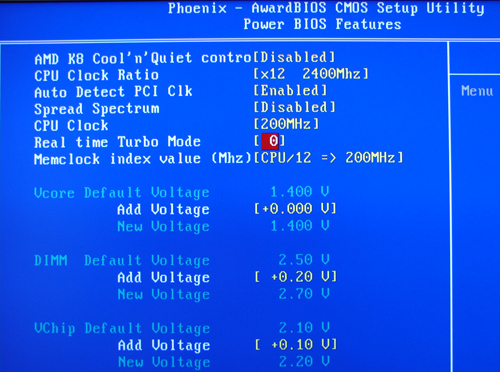
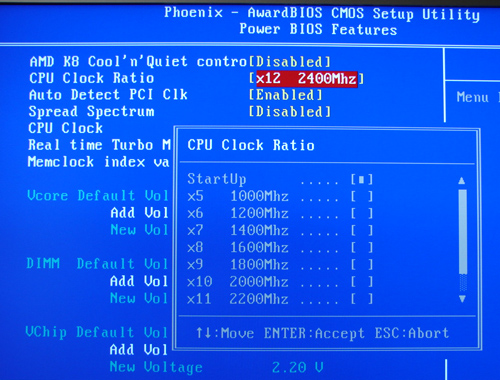
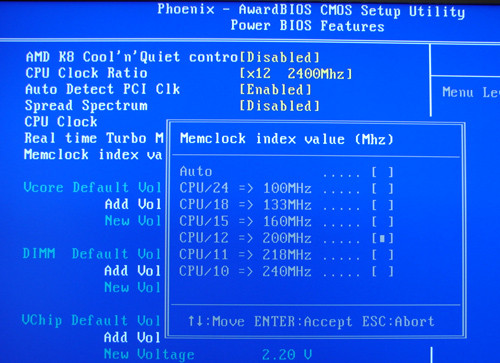
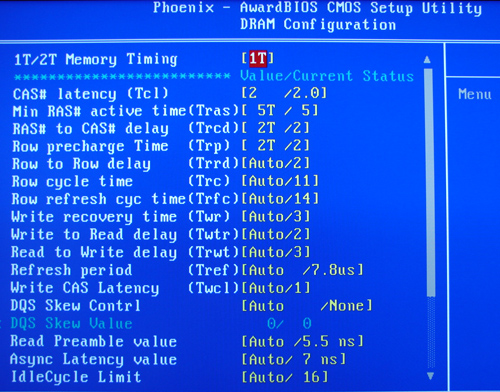
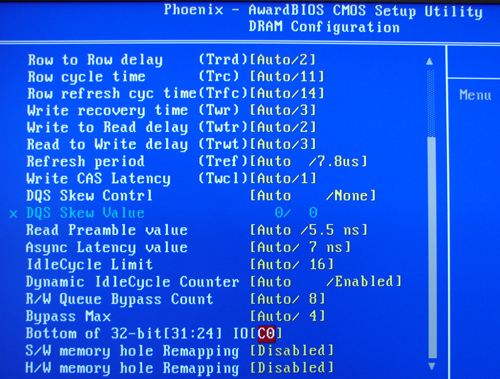










35 Comments
View All Comments
Marlin1975 - Wednesday, March 15, 2006 - link
Again with the cheap sound and fan heatsink. When I see Realtek sound i think jubk. But then ui see a NON-HD ALC-655 I think even less of the board. I mean what did they save a whole quarter by going to the cheap non-hd sound? Let alone the pOS that is realtek.Then instead of juts putting a large passive heatsink they put a small one with a fan. Fans will wear out and even when working 100% still make noise.
Good chipset but another example of the bean counters killing decent sound, PCIe ethernet, good heatsink, etc...
jimveta - Wednesday, March 15, 2006 - link
One quibble: the onboard Nforce4 ethernet controller is NOT a PCIe device. None of the onboard devices are in fact.kb3edk - Wednesday, March 15, 2006 - link
I was thinking about building my first SLI rig off the ASRock 939SLI32 board reviewed here a few days ago but I'm glad I held off... it seems like the EPoX is a better overclocker. I already own two ASRock 939Duals with M1695, they overclock pretty decent but are held back by the vcore... I even tried one of the volt mods and it didn't work out for me. And yes, the BIOS on the M1695 board is the wackiest I have ever used, there's all sorts of hardware it still won't recognize. I think this is the most I've ever flashed a BIOS on any mobo I've owned. But I think things are under control now... ;)Why does the EPoX M1967 board beat the ASRock M1697 board in most of the gaming benchmarks despite the fact that the EPoX's PCI Express lanes are only x8 in SLI? According to the review of the ASRock board here that board is supposed to be running x16 in both lanes in SLI mode. Is it just that there are no PCIe cards out there yet that are maxing out PCIe x8 bandwidth?
Anyway as long as my gaming isn't going to be held back by x8 PCIe (and it sure loks that way now) I think this EPoX board is a winner... thanks AnandTech for the great benchies!
-Adam in Philly
Araemo - Wednesday, March 15, 2006 - link
How long do you run prime95/superpi on an overclock to verify stability?I ask because I've just RMAd a board and CPU that could not run prime95 for more than about 5 hours at stock speeds, but it does run for about 5-6 hours before it shows an error. The replacement board and CPU have not arrived yet, so I haven't been able to check on a similar system yet.
Gary Key - Wednesday, March 15, 2006 - link
We typically run the following or a combination thereof for both stock and overclocked conditions. We might utilize additional components or various combinations not listed in our test system and use such applications as Office2003, Nero, or Photoshop depending upon the situation.
A. Prime95- Priority 1 - 30 minutes (if it passes go to step B, if not, tune until it can pass, this includes memory/voltage/fsb settings)
B. Prime95- Priority 10 - 4~12 hours (depends on the board and target market)
1. SuperPI - 3 iterations with settings at 32m generally, sometimes less.
2. 3DMark01 - Demo Loop 2 hours
3. 3DMark05 - Demo Loop 2 hours
4. Prime95/3DMark05 - Prime set at priority 1 - 3DM05 Loop - 4 hours
5. WorldBench 5 - 3 iterations (optional, depends on board, target market, or new chipset)
6. Standard test suite - 3 iterations of each application.
7. Game Testing - 4~8 hours of actual gameplay, AOE III, BF2, GTR/Legends, Guild Wars or others depending upon the software image.
8. MemTest86 - 2~6 hours (depends on board, target market, or new chipset)
Please realize that a combination of components, drivers, bios settings, and software loads can all account for failures that are outside of the true capability of the board. Our test systems generally use premium components that assist in the ability of the board to pass these tests along with constant climate control settings. The amount of hours required to debug a system is sometimes staggering. Of course we cannot test every combination of components or software available so at times a certain combination that fails for a user is not seen by us. I hope this answers your question.
Araemo - Wednesday, March 15, 2006 - link
Thats slightly better than I expected, but I have one last question: During the extended prime95 test, are other things done on it in the meantime(the 3dmark runs or gaming or some such?).In personal use I like to see at least 24 hours of prime95, but I FULLY understand that that would be even more time consuming for you guys, since you have to verify stability at multiple settings per board per review... 12 hours is welcome to me.
Araemo - Wednesday, March 15, 2006 - link
Nevermind, I saw you answered my own question in #4(thats what i get for skimming the list)kb3edk - Wednesday, March 15, 2006 - link
I like to run prime95 or other burn-in programs (like Sandra, etc) overnight just to be on the safe side, but in my experience if I am pushing an OC too hard I have always had burn-in fail within half an hour. Of course from reading countless other postings on OC message boards, YMMV :)To keep things topical here, my ASRock M1695 boards can bump an A64 Winnie 3000+ from 1.8 to 2.25 GHZ (250 HTT), and an A64 X2 Manchester 3800+ from 2 GHz to 2.4 GHz (240 HTT). After that the boards just run out of volts. If I try to push the HTT any higher the system doesn't even boot.
Did you make sure to check your RAM before RMAing that mobo and CPU? Sometimes if you have a bad register somewhere, a burn-in program will take a little time to reach it and conk out. Especially something like superpi which has such a low memory footprint. You might wanna run Memtest86 on your box as soon as you get a chance, if you haven't already.
Araemo - Wednesday, March 15, 2006 - link
My RAM passed memtest86+ on both this motherboard, and my old NF7-S(Once I found out one ram slot on that board was bad and moved the second stick to the other slot, I left it running memtest86 all day and it never errored. But I wanted dual channel memory again, so I ordered the ASRock 939DualSata2 and a 3200+, and memtest86 passes, but prime95 dies eventually.)Technically, registers are in the CPU, and I think ram uses a different terminology, but I know what you meant. As far as I can tell, my RAM is fine, and I don't believe it is a windows problem(I've only had one crash in the week I've had the board: Winamp crashed on me randomly last night.. UT2k4 and NS/TS(Half-life mods) run fine)
My PSU should be plenty for this board(According to people in the ASRock thread in the forums, my PSU is higher end than others who have this system running well, and voltages are stable according to the mobo)... Sooo... I have no way of knowing if it was the board or the CPU, since I don't have any other S939 boards around. I'm just glad newegg let me return it with no hassle. (And I was smart enough to order the opteron 146 this time around instead of the 3200+.. but I never even got around to touching the overclocking on the 3200+. I don't start overclocking until I know prime95 is stable at stock settings)
On my mobile barton I experienced similar symptoms of a too-high overclock: Prime95 would error out relatively quickly, sound would start screwing up(I went the quick way, I'd load prime95, and the 3dmark03 demo.. nice heavy stress and audio(and sometimes video) would start going weird well before a hard lock.) And that CPU and ram still handle memtest86 and prime95 fine.
Araemo - Wednesday, March 15, 2006 - link
I'm also curious how you know a system is 'super pi' stable?As far as I can tell, it's more a speed test than a stability test in the sense that prime95 is..
Super Pi seems to be calculating a fresh value for pi, but not comparing it to the known value? Is there an easy way to compare its output to the known value?